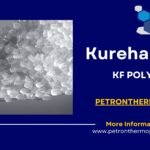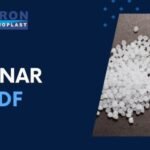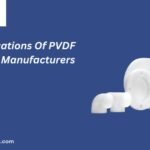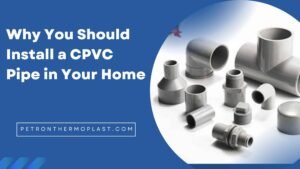1. Introduction
The domain of advanced materials has been continuously evolving, driven by the quest for materials that exhibit exceptional properties and versatility. One such remarkable advancement is the advent of Zote Foams, a class of cellular materials with a distinctive structure that sets them apart from traditional foams. These innovative foams have taken center stage in research laboratories and industrial applications due to their unparalleled combination of mechanical, thermal, and chemical properties.
2. The Genesis of Zote Foams
The origins of Zote Foams can be traced back to the late 20th century when researchers sought to overcome the limitations of conventional foams. Traditional foams, while widely used, often faced challenges in meeting the demands of various industries, such as weight restrictions in aerospace applications or impact resistance in sports equipment. This quest for improvement led to the development of Zote Foams, which have since sparked a new era in material science.
3. The Composition of Zote Foams
At the core of the distinct characteristics of Zote Foams lies their composition. These foams are predominantly composed of a matrix material and gas-filled pores or cells. The choice of matrix material is crucial as it dictates the overall properties of the foam. Polymers, metals, ceramics, and composites have all been used as matrix materials for Zote Foams.
4. Production Techniques
The production of Zote Foams involves intricate processes, each contributing to the final product’s quality and characteristics. Two primary techniques have been employed in the manufacturing of these foams: batch foaming and continuous foaming.
4.1. Batch Foaming
Batch foaming is a traditional method in which the foam is produced in discrete batches. In this approach, the matrix material, along with a foaming agent or blowing agent, is mixed to create a foamable mixture. This mixture is then subjected to controlled conditions of temperature and pressure to initiate foaming. The resulting foam is then cured to obtain the final product.
4.2. Continuous Foaming
Continuous foaming, on the other hand, represents a more modern and automated approach to foam production. In this method, the foam is produced in a continuous process, enabling higher production rates and consistency in foam quality. The matrix material and foaming agents are fed into a continuous foaming machine, where they undergo controlled expansion to form the foam. This continuous foam is then cut into desired shapes and sizes.
5. Cellular Structure
The defining feature of Zote Foams is their cellular structure, which plays a pivotal role in determining their properties and performance. The cellular structure can be broadly classified into two types: closed-cell and open-cell.
5.1. Closed-Cell Structure
In closed-cell Zote Foams, the cells are fully enclosed and separated from each other by thin walls. This closed-cell arrangement imparts exceptional properties to the foam, such as high strength, low thermal conductivity, and buoyancy. The closed-cell structure also provides a barrier to moisture, making these foams ideal for applications where water resistance is essential, such as marine equipment and buoyancy aids.
5.2. Open-Cell Structure
Conversely, in open-cell Zote Foams, the cells are interconnected, forming a network of voids throughout the foam. This interconnected structure facilitates the flow of gases and fluids through the foam, making it highly permeable. The open-cell arrangement results in softer and more flexible foams, which find applications in cushioning and comfort-related products.
6. Remarkable Properties of Zote Foams
The unique cellular structure of Zote Foams bestows them with a wide array of exceptional properties that have caught the attention of various industries. Some of the noteworthy properties include:
6.1. Low Density and High Porosity
One of the most striking features of Zote Foams is their exceptionally low density and high porosity. This combination results in materials that are incredibly lightweight, making them ideal for weight-sensitive applications in aerospace, automotive, and sports industries. The high porosity also contributes to their excellent thermal insulation properties, as air-filled pores hinder heat transfer.
6.2. Exceptional Thermal Insulation
The closed-cell structure of some Zote Foams imparts them with outstanding thermal insulation capabilities. These foams act as effective thermal barriers, preventing heat from dissipating and maintaining a stable temperature within enclosed spaces. This property makes them invaluable in applications requiring temperature regulation, such as HVAC systems and insulated packaging.
6.3. Superior Impact Absorption
The ability of Zote Foams to absorb and dissipate impact energy efficiently is another key advantage that has found applications in various industries. These foams have been incorporated into protective gear, automotive bumpers, and packaging materials to enhance impact resistance and ensure the safety of users and products alike.
6.4. Buoyancy and Water Resistance
Certain types of Zote Foams exhibit natural buoyancy due to their closed-cell structure, allowing them to float on water without absorbing it. This property is invaluable in marine applications, where materials with high buoyancy and water resistance are essential. Buoyancy aids, marine buoys, and floating platforms are some examples of how these foams are utilized in water-related industries.
6.5. Chemical and Biological Resistance
In specific applications where exposure to harsh chemicals or biological agents is inevitable, Zote Foams have proven to be resilient and resistant to degradation. Their closed-cell structure acts as a barrier, preventing the penetration of chemicals and minimizing the risk of degradation over time. This property has found applications in chemical storage containers, biomedical devices, and various industrial equipment.
7. Characterization Techniques
The characterization of Zote Foams is critical to understanding their structure and properties thoroughly. Several techniques have been employed for this purpose, each offering unique insights into the foam’s internal architecture.
7.1. Scanning Electron Microscopy (SEM)
Scanning Electron Microscopy (SEM) is a powerful tool used to investigate the microstructure of Zote Foams. By capturing high-resolution images of the foam’s surface and cross-section, SEM provides valuable information on cell size, shape, and distribution, aiding in understanding foam morphology.
7.2. X-ray Computed Tomography (CT)
X-ray Computed Tomography (CT) is a non-destructive technique that enables the visualization of internal structures in three dimensions. This technique has been extensively used to study the internal cellular architecture of Zote Foams, providing insights into cell density, connectivity, and defects.
7.3. Fourier Transform Infrared Spectroscopy (FTIR)
Fourier Transform Infrared Spectroscopy (FTIR) is employed to analyze the chemical composition of Zote Foams. By detecting molecular vibrations and characteristic absorption bands, FTIR aids in identifying the polymer matrix and any functional groups present in the foam.
8. Applications of Zote Foams
The exceptional properties of Zote Foams have opened up a plethora of applications across various industries, transforming the way we approach design and engineering challenges. Some prominent applications include:
8.1. Aerospace and Aviation
In the aerospace and aviation industries, weight reduction is a critical factor in improving fuel efficiency and overall performance. Zote Foams find application in aircraft components, providing lightweight and structurally sound solutions for interior panels, cabin insulation, and aerospace composites.
8.2. Sports and Recreation
Sports and recreational equipment require materials that can withstand impact and provide cushioning comfort. Zote Foams are extensively used in sports helmets, protective padding, shoe midsoles, and exercise mats, enhancing the safety and performance of athletes and fitness enthusiasts.
8.3. Medical and Healthcare
In the medical field, Zote Foams have become instrumental in manufacturing orthotic and prosthetic devices, wound dressings, and surgical implants. Their biocompatibility and ability to conform to the human body make them ideal materials for medical applications.
8.4. Packaging and Transportation
The superior impact absorption and thermal insulation properties of Zote Foams have made them invaluable in the packaging and transportation industries. They are used in protective packaging for fragile items, temperature-sensitive goods, and in the automotive sector for impact-resistant components.
8.5. Construction and Architecture
The lightweight and insulating properties of Zote Foams are harnessed in construction and architecture to improve energy efficiency and structural integrity. Foam-filled sandwich panels, roofing insulation, and sound-absorbing materials are just a few examples of how these foams are utilized in the construction sector.
9. Environmental Sustainability of Zote Foams
As concerns about environmental impact continue to grow, the sustainability of materials, including Zote Foams, is gaining increasing attention. The environmental aspects of Zote Foams can be analyzed through the following perspectives:
9.1. Recycling and Reusability
Efforts are underway to enhance the recyclability and reusability of Zote Foams. Advances in recycling technologies allow for the recovery and processing of foam waste, reducing the amount of foam that ends up in landfills.
9.2. Biodegradability
Some Zote Foams are designed to be biodegradable, breaking down naturally over time without causing harm to the environment. This property is especially beneficial in single-use applications and disposable products.
9.3. Carbon Footprint
Researchers and manufacturers are continually striving to reduce the carbon footprint associated with Zote Foam production. This involves optimizing production processes, using renewable resources, and minimizing energy consumption.
10. Future Prospects and Challenges
As Zote Foams continue to captivate researchers and industry professionals, the future prospects for this innovative material look promising. However, there are several challenges that need to be addressed, such as improving foam consistency, developing specialized formulations, and expanding the scope of sustainable practices in foam production.
11. Conclusion
In conclusion, Zote Foams have undoubtedly carved a niche for themselves in the world of modern materials. Their unique cellular structure, exceptional properties, and versatility have made them a material of choice across diverse industries. As research and development in foam technology continue to progress, the transformative potential of Zote Foams is bound to unveil new horizons, making the impossible possible and the unimaginable a reality.









